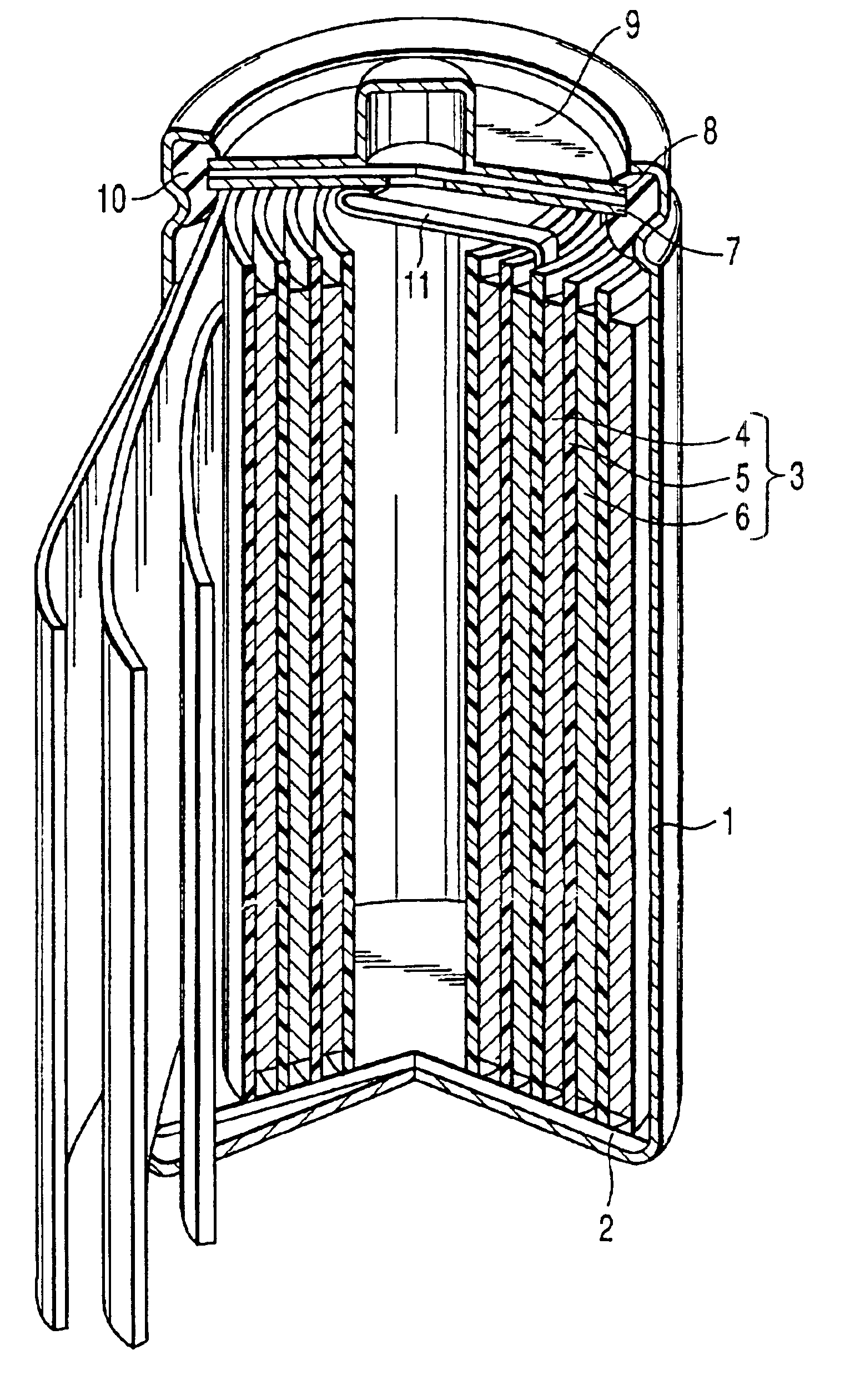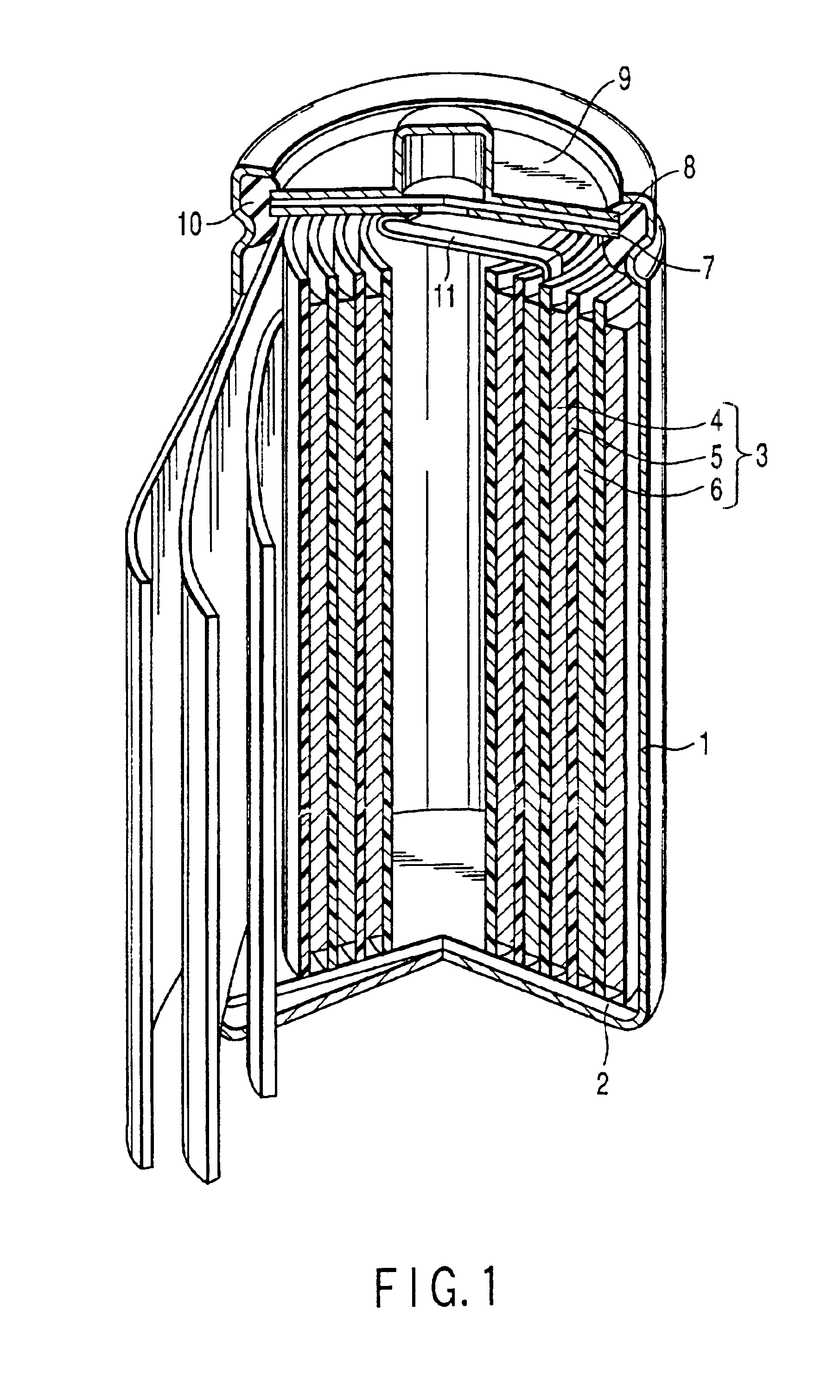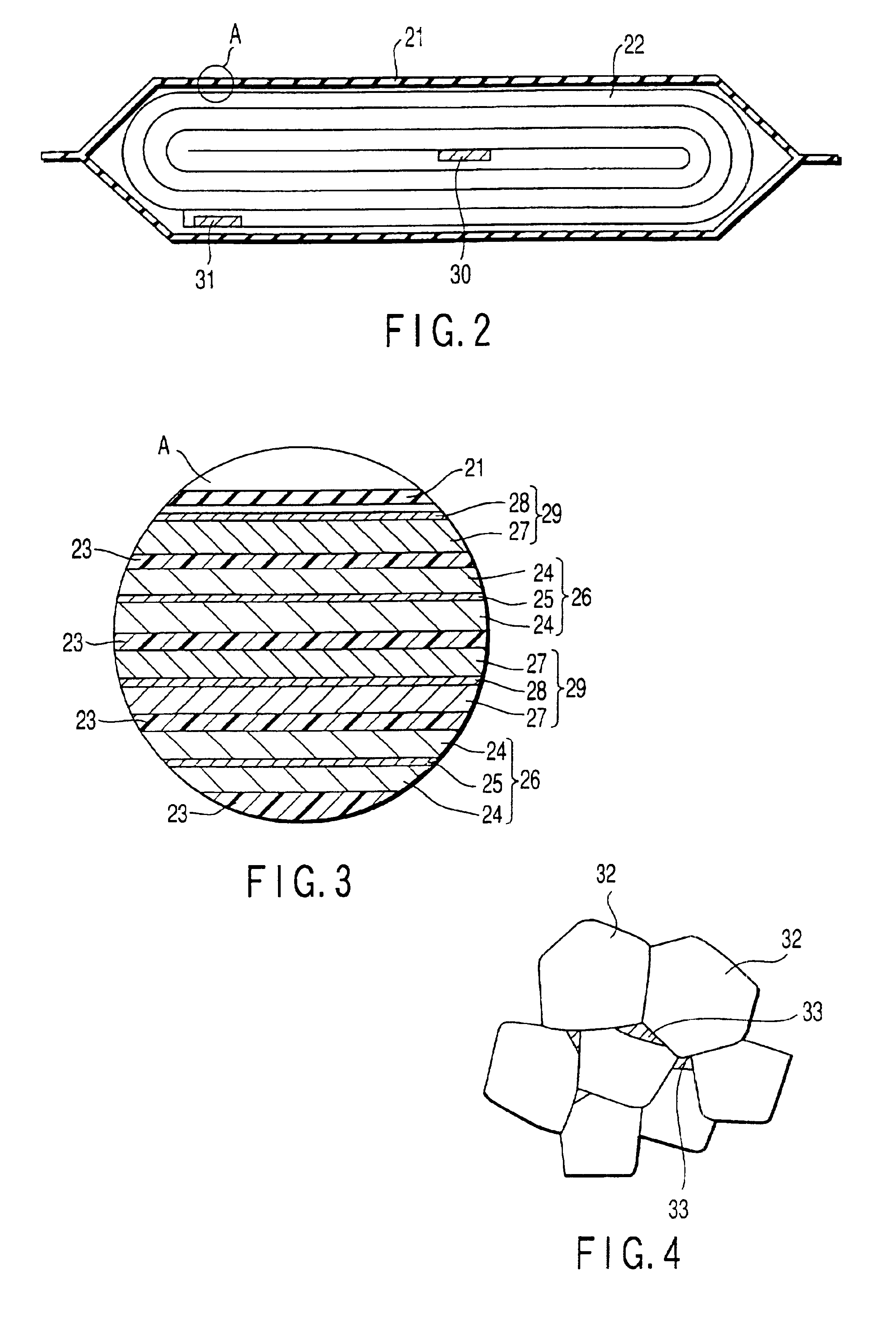Positive electrode active material and lithium ion secondary battery
a lithium ion secondary battery and active material technology, applied in the direction of cell components, final product manufacturing, sustainable manufacturing/processing, etc., can solve the problems of large fluctuation in price, large cost of cobalt, and small amount of natural resources used as raw materials of complex compounds
- Summary
- Abstract
- Description
- Claims
- Application Information
AI Technical Summary
Benefits of technology
Problems solved by technology
Method used
Image
Examples
examples 1 to 26
Prepared as starting materials were powders of LiOH.H2O, Ni(OH)2, oxides, carbonates and nitrates of the element Me1, NaOH, KOH, Ca(OH)2, sodium sulfide (Na2S.9H2O) as a sulfide compound, and a sulfate compound (NiSO4.6H2O). These powdery compounds were selected to form the composition shown in Tables 1 and 2, i.e., Li1.1(Ni0.88Me10.02)(O1.9X0.1)+aA, and mixed, followed by further mixing the composition in a Henschel mixer for 30 minutes so as to prepare a mixed powder. The mixed powder was put in an alumina sagger for firing. Firing was performed at 480° C. for 10 hours while allowing an oxygen gas to flow at a rate of 5 liter / min, followed by further firing the mixed powder at 700° C. for 20 hours with an oxygen gas flow at a rate of 5 liter / min so as to obtain a positive electrode active material.
Incidentally, the composition of the positive electrode active material was measured by glow discharge mass spectrometry (GDMS). In the GDMS method, several kilovolts (kV) of voltage is ...
examples 27 to 49
Prepared as starting materials were powders of LiOH.H2O, Ni(OH)2, oxides, carbonates and nitrates of the element Me1, NaOH, KOH, Ca(OH)2, sodium sulfide (Na2S.9H2O) as a sulfide compound, a sulfate compound (NiSO4.6H2O), an oxide, a sulfide and alkoxide of Si, and an oxide, a sulfide and an alkoxide of Fe. These powdery compounds were selected to form the composition shown in Tables 4 and 5, i.e., Li1.1(Ni0.88Me10.02)(O1.9X0.1)+aA+bB, and mixed, followed by further mixing the composition in a Henschel mixer for 30 minutes so as to prepare a mixed powder. The mixed powder was put in an alumina sagger for firing. Firing was performed at 480° C. for 10 hours while allowing oxygen gas to flow at a rate of 5 liter / min, followed by further firing the mixed powder at 700° C. for 20 hours with an oxygen gas flow at a rate of 5 liter / min so as to obtain a positive electrode active material.
A cylindrical lithium ion secondary battery was prepared as in Example 1, except that the positive elec...
examples 70 to 89
Prepared as starting materials were powders of LiOH.H2O, Ni(OH)2, Co(OH)2, oxides, carbonates and nitrates of the element Me2, NaOH, KOH, Ca(OH)2, sodium sulfide (Na2S.9H2O) as a sulfide compound, a sulfate compound (NiSO4.6H2O), an oxide, a sulfide and an alkoxide of Si, and an oxide, a sulfide and an alkoxide of Fe. These powdery compounds were selected to form the composition shown in Tables 8 and 9, i.e., Li1.1(Ni0.70Co0.18Me20.02)(O1.9X0.1)+aA+bB, and mixed, followed by further mixing the composition in a Henschel mixer for 30 minutes so as to prepare a mixed powder. The mixed powder was put in an alumina sagger for firing. Firing was performed at 480° C. for 10 hours while allowing oxygen gas to flow at a rate of 5 liter / min, followed by further firing the mixed powder at 700° C. for 20 hours with an oxygen gas flow at a rate of 5 liter / min so as to obtain a positive electrode active material.
A cylindrical lithium ion secondary battery was prepared as in Example 1, except that...
PUM
 Login to View More
Login to View More Abstract
Description
Claims
Application Information
 Login to View More
Login to View More - R&D
- Intellectual Property
- Life Sciences
- Materials
- Tech Scout
- Unparalleled Data Quality
- Higher Quality Content
- 60% Fewer Hallucinations
Browse by: Latest US Patents, China's latest patents, Technical Efficacy Thesaurus, Application Domain, Technology Topic, Popular Technical Reports.
© 2025 PatSnap. All rights reserved.Legal|Privacy policy|Modern Slavery Act Transparency Statement|Sitemap|About US| Contact US: help@patsnap.com



